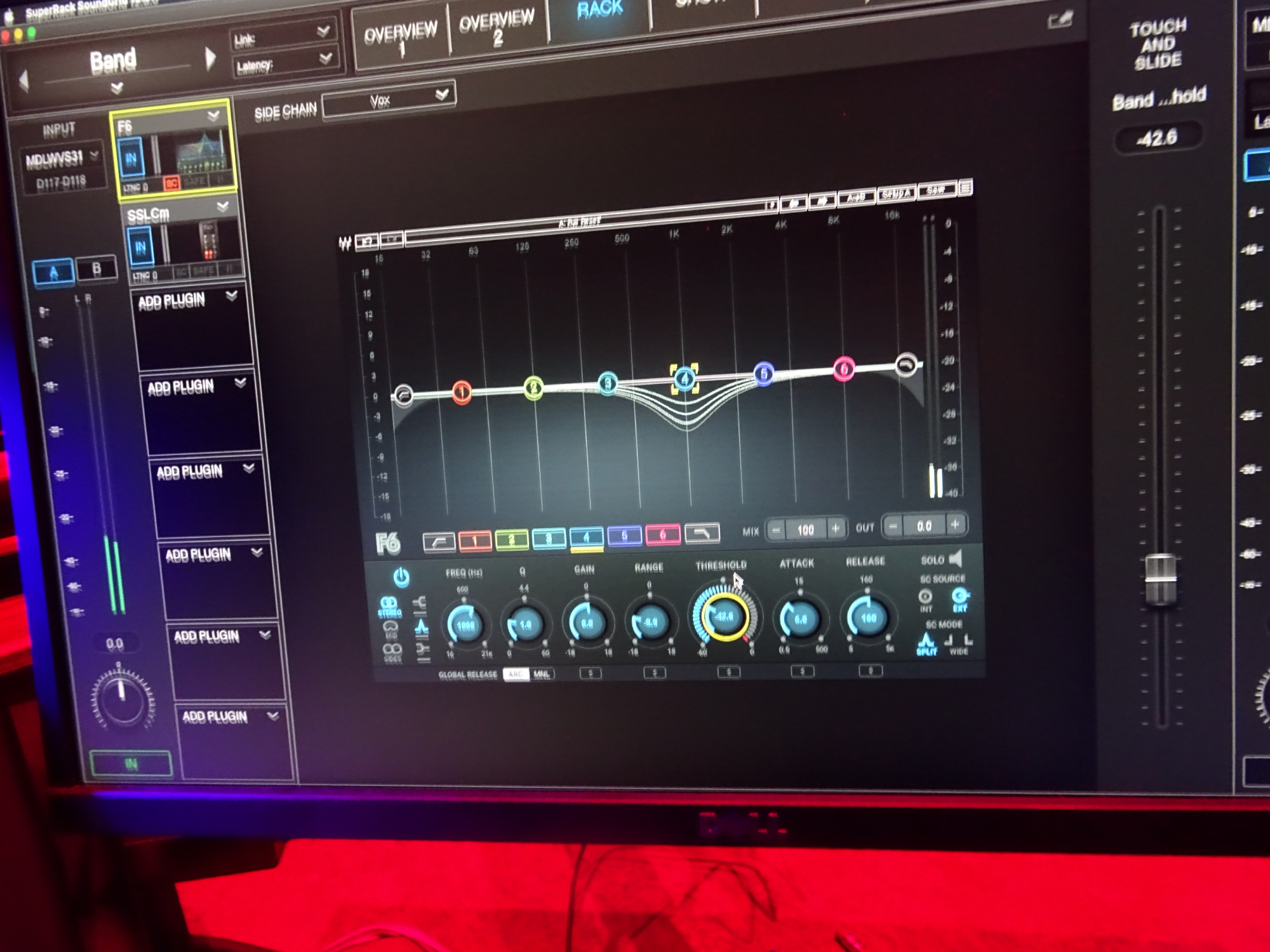Many worship songs begin with vocals and light accompaniment or an acapella vocal segment, then the band starts to play and the vocals can get lost. When this happens, we’ve learned to reach for the faders and adjust the mix. But today’s digital mixing tools and DSP technologies give us more precise ways to solve the problem without making wholesale changes to the mix.
Detective Work
Sometimes the vocals aren’t being masked by the band as a whole – it can be one or two specific instruments, like a lead guitar or keyboard. And the problem may be limited to a narrow frequency range in one of those instruments. That’s when our digital tools get to do their stuff.
First, listen for the problem frequencies. Then, if you have an audio analysis system (we use Rational Acoustics Smaart), use it locate the precise frequencies. employing a dual trace view, look at the vocals and add the suspect instrument in the second trace. Watch where the two coincide when the vocals are being masked. In our experience, the problem frequencies are usually between 1 kHz and 4 kHz.
Apply Some Finesse
Once you’ve found the offending musical instrument and the problem frequencies, you could just apply a PEQ filter to notch them out. But even a narrow-band filter is something of a blunt tool that may affect the whole character of the instrument. It’s better to apply that filter only when it’s needed and that’s now possible with a dynamic EQ like those on most digital mixing consoles.
At our church, we’ve gone even farther by using the vocals themselves to trigger the dynamic EQ. It’s sort of like getting the patient to apply their own medicine – and only when needed. We’re using an external Waves rack with an F6 dynamic EQ to implement this approach, but you may find everything needed already in your digital mixer. Here’s a quick outline of the process:
• Set up a side chain that includes only the vocals. This side chain never enters the mix itself. It’s only used to trigger the dynamic EQ.
• Insert a dynamic EQ block in the band group – or in the input channel for the offending instrument. Use the side chain from step 1 as the trigger.
• Configure the dynamic EQ for a center frequency that corresponds to the offending frequency range.
• Use a narrow filter with a Q of 10 or higher. Set the filter for -3 dB to -4 dB maximum insertion.
• Set threshold, attack and release as you would for a limiter.
Remembering The Goal
Unlike a concert where the audience comes to be entertained, we’re mixing for a worship service. And great tools like dynamic EQ allow us to strike a balance between the band and the vocals while maintaining a comfortable level that encourages everyone to stand and sing their praise.





















